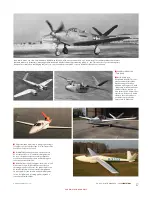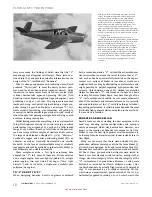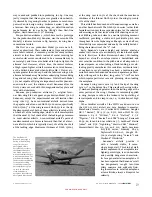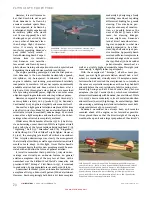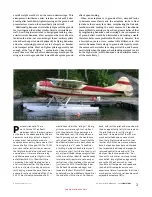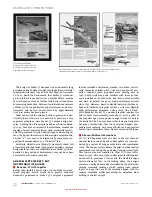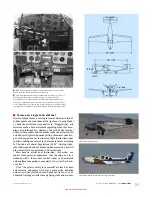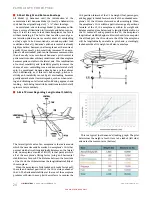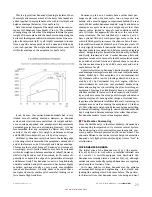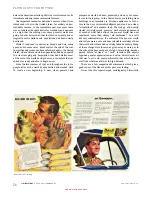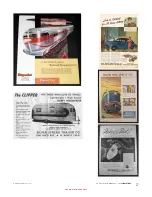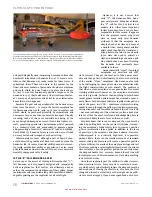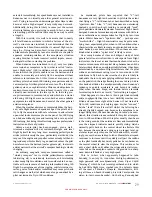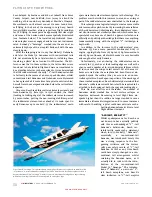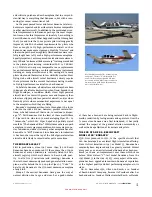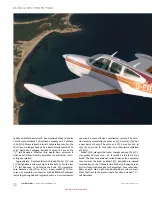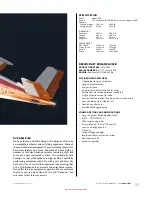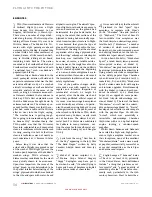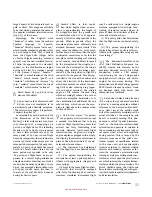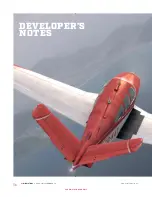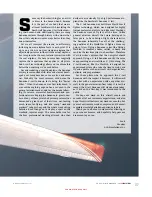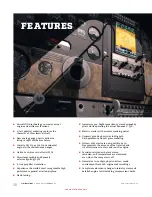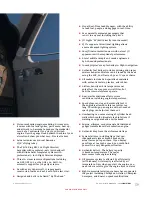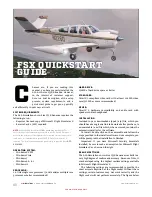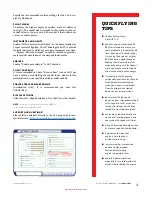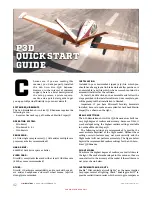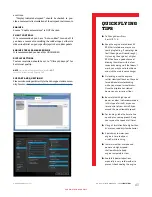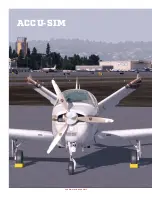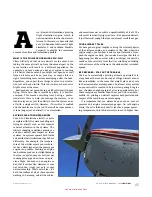
30
A2A
SIMULATIONS :::
ACCU-SIM V35B BONANZA
FLYING INTO THE FUTURE
FOR SIMULATION USE ONLY
been delayed by business and did not takeoff from Essex
County Airport, near Fairfield, New Jersey to attend the
wedding of his cousin Rory Kennedy at Martha’s Vineyard,
Massachusetts until almost sunset. He soon found him-
self flying in the dark of the evening in very hazy, humid
low- visibility weather, always a perilous flight condition
for VFR flying. At some point he apparently lost clear sight
and sense of the horizon and became spatially disoriented
(see footnote below.) The installed sophisticated three-
axis autopilot was not engaged and he was not instrument
rated. Kennedy’s “Saratoga” crashed into the ocean at an
extremely high speed in a steep left bank and with the nose
steeply down.
All of the foregoing is not to say that Model 33 Debonairs
and later the Model 36 Bonanzas with conventional tails
did not occasionally have fatal accidents, including those
involving a pilots’ loss of control in IFR weather. The dif-
ference was that in these accidents, the tail surfaces were
found not to have failed in flight and were not considered to
be a significant factor in these accidents. It was determined
that the ruddervators of the early “V”- tail Bonanzas tended
to fail early in the course of an over- speed situation, whilst
conventional- tail Bonanzas and Debonairs were discovered
to have granted a bit more time for a pilot to extricate him/
herself from the overspeed situation before the tail surfaces
departed.
Of course, Beech took this matter extremely seriously and
from Bonanza C35 (late 1950 to 1952) onward, the chord
(leading to trailing edge) of the ruddervators was increased
by seven inches, putting the non- moving stabilizer part of
the ruddervator sixteen inches ahead of its main spar. On
early Bonanzas up to model C- 35 the ruddervators’ main
spars were their sole attachment points to the fuselage. The
problem was that with this increase in area, an even larger
part of the ruddervator was now unattached to the fuselage.
This redesign was a logical attempt to create a more stable
and less sensitive pitch control by increasing the overall area
of the ruddervators. Unfortunately, the ruddervators’ inter-
nal structure was not similarly enhanced, which some have
speculated was because of Beech’s apparent reluctance to
officially and publicly acknowledge that there was anything
fundamentally wrong with the original “V”- tail design to
begin with.
In addition to the increase in the ruddervators’ area,
Bonanza C35 has a more powerful Continental E- 185- 11
engine, upping the hp from 165 hp to 205 hp for one minute
and 185 hp continuous, all of which make it a very desirable
and sought- after early Bonanza.
Unfortunately, not anchoring the ruddervators more
securely in C35, such as at their leading edges as well as the
spar, caused a number of in- air ruddervator failures which,
in turn, caused the wings to fail as well. All of these acci-
dents occurred after the aeroplane had been flown at air-
speeds beyond the redline (Vne,) as occurs in an uncon-
trolled spiral dive. Based upon inspection of the wreckage of
these crashed aeroplanes, Beech ultimately determined that
Bonanza’s ruddervators would henceforth be required to be
attached to the fuselage at both the spar and leading edge.
This fix was effective and thereafter the number of
Bonanzas which crashed due to tail surface collapse or
departure decreased. Recovering to level flight from air-
speeds higher than the redline no longer tended to cause
immediate airframe disintegration and in some instances
with careful handling, a pilot could now extricate such a
hurtling Bonanza from its dive to level
flight without incident.
“ALRIGHT, WE GET IT”
Whilst spokespersons for Beech are
not known to have actually publicly
said this or acknowledged “V” - tail
Bonanza’s deficiencies, Beech cer-
tainly tacitly made such a statement
when, in 1959, Model 33 “Debonair”,
essentially a conventional-
tail
Bonanza, was introduced. Surely this
was a strong response to the bur-
geoning criticism and the histori-
cally poor safety record of “V”- tail
Bonanza. At this or any time Beech
could have simply changed to a con-
ventional tail arrangement whilst
retaining the Bonanza name, as it
actually did in 1968 with the intro-
duction of the conventional-
tail
Model 36 “Bonanza.” The introduc-
tion of “Debonair,” a new non- “V”-
tail Beech aeroplane, was Beech’s
clear invitation to “V”-
tail sceptics
Piper PA- 32R “Saratoga.” This advanced and very high- performance aeroplane was initially called
“Piper Lance,” a retractable undercarriage Piper PA- 32 Cherokee Six. As this aeroplane evolved it
became known as Piper “Saratoga.” Similar to Lance in most ways, Saratoga has a tapered wing,
whilst Lance’s wing is Cherokee Six’s un- tapered “Hershey Bar” type.
Summary of Contents for BONANZA ACCU-SIM V35B
Page 1: ...A2ASIMULATIONS BONANZA ACCU SIM V35B BONANZA ...
Page 3: ...A2ASIMULATIONS BONANZA ACCU SIM V35B BONANZA ...
Page 5: ...www a2asimulations com ACCU SIM V35B BONANZA A2ASIMULATIONS 5 FOR SIMULATION USE ONLY ...
Page 27: ...www a2asimulations com ACCU SIM V35B BONANZA A2ASIMULATIONS 27 FOR SIMULATION USE ONLY ...
Page 58: ......
Page 68: ...68 A2ASIMULATIONS ACCU SIM V35B BONANZA www a2asimulations com FOR SIMULATION USE ONLY ...
Page 112: ......


